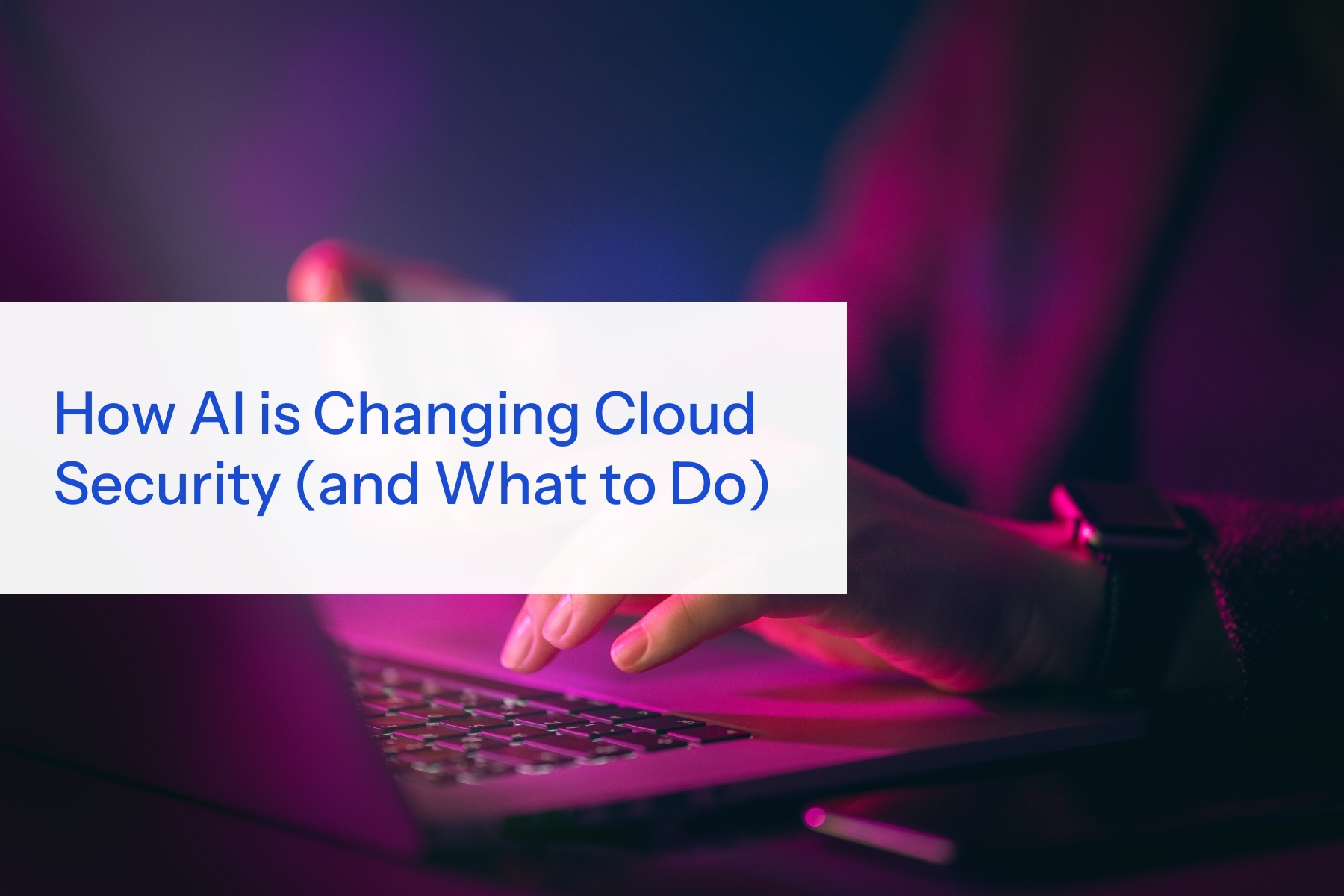In today’s digital-first world, cloud adoption has become the backbone of modern business operations. But as more organizations migrate to the cloud, the attack surface grows – and so do the threats.
Cybercriminals are getting smarter. They’re using automation, machine learning, and AI-driven attacks to bypass traditional security controls. The only way to keep up? Fight fire with fire – by using AI to protect your cloud infrastructure.
This blog insight will break down how AI is changing cloud security and what steps you should take to stay ahead of the curve.
The New Cloud Security Landscape
Cloud environments are dynamic. Unlike static on-premises networks, cloud infrastructures are constantly evolving with new workloads, users, and permissions. Traditional, rule-based security systems can’t keep pace with this speed and complexity.
Here where AI (Artificial Intelligence) steps in.
AI helps organizations move from reactive security to proactive and even predictive security – identifying potential threats before they escalate into real incidents.
How AI is Transforming Cloud Security
1. Predictive Threat Detection
AI systems can analyze massive volumes of data from cloud environment and identify subtle patterns that humans would miss. This allows AI to predict and detect threats before they can damage, often stopping attacks at the reconnaissance phase.
2. User and Entity Behavior Analytics (UEBA)
AI monitors the behavior of users and systems to establish a baseline of “normal” activity. Wen deviations occur – like a user accessing resources they never have before or large amounts of data being transferred unexpectedly – AI raises a flag immediately.
3. Automated Incident Response
Time is critical during a security incident. AI can trigger automated workflows to contain and remediate threats instantly – shutting down compromised instances, revoking credentials, or isolating network segments without waiting for human intervention.
4. Continuous Compliance Monitoring
For organizations operating in regulated industries, staying compliant is non-negotiable. AI can continuously audit your cloud environment, automatically identifying compliance drift and suggesting remediations to keep you aligned with standards like ISO 27001, SOC 2, HIPPA, and more.
5. Enhances Identity and Access Management
With AI, access management becomes smarter. It can detect credential misuse, prevent privilege escalation, and analyze login patterns to identify potential account takeovers – all in real time.
Why AI is Now Essential in Cloud Security
Attackers are already leveraging AI to create more sophisticated phishing campaigns, automate vulnerability scanning, and even adapt malware behavior to avoid detection.
If organizations don’t start integrating AI into their defenses, they’ll quickly fall behind in a cybersecurity arms race where manual responses are simply too slow.
What You Can Do Right Now
1. Choose AI-Powered Security Tools
Cloud providers like AWS, Azure, and Google Cloud offer built-in AI-powered security services. Consider:
- AWS GuardDuty (threat detection)
- Azure Sentinel (SIEM with AI insights)
- Google Chronicle (security analytics)
Look beyond basic monitoring tools and select platforms that incorporate machine learning for smarter insights.
2. Automate Your Incident Reponse
Use Security Orchestration, Automation, and Response (SOAR) platforms to build automated playbooks. These can take immediate actions like:
- Quarantining compromised accounts
- Blocking suspicious IP addresses
- Rolling back unauthorized changes
3. Train Your Security Teams
AI is only good as the people using it. Upskill your teams so they can integrate AI-driven alerts, understand anomalies, and know when human oversight is required.
4. Stay Agile and Proactive
Security isn’t static. Continuous assess your cloud environment, test for new vulnerabilities, and refine your defenses based on AI-generated insights.
The Future of Cloud Security is Autonomous
In the coming years, we will see cloud environments that can self-heal, self-optimize, and self-defend using AI. The sooner you adopt AI as a core part of your cloud security strategy, the better prepared you’ll be to face an evolving threat landscape.
Final Thoughts
AI is not a silver bullet, but it’s a critical ally in securing your cloud. With threats becoming more advanced by the day, businesses must combine automation, intelligence, and human expertise to build a resilience defense.
The question isn’t whether AI should be part of your cloud security strategy. The question is: How soon can you implement it?
Need help integrating AI into your cloud security strategy?
Contact us to learn how we can secure your cloud infrastructure with cutting-edge, AI-driven solutions.

